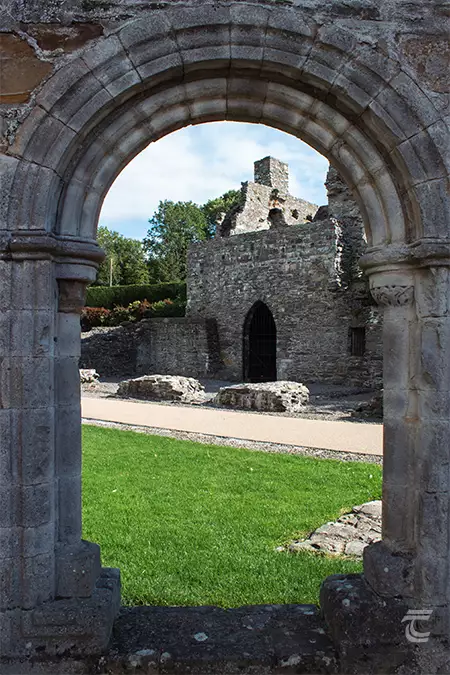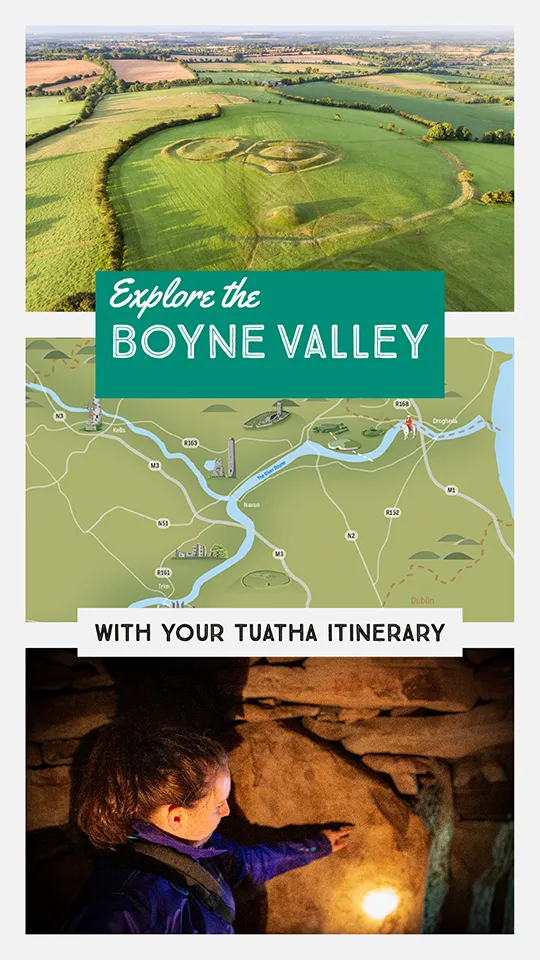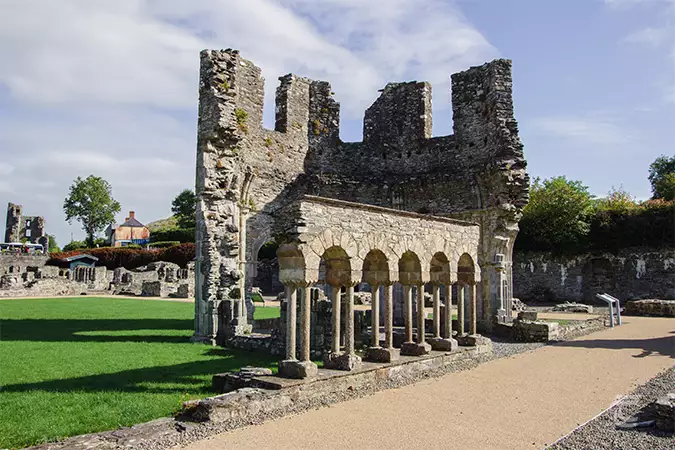Old Mellifont Abbey
Mellifont Abbey was the first Cistercian abbey in Ireland, known to the Cistercians in Ireland as the ‘Mother House’, a base from which the Cistercian community expanded, adding more and more institutions (known as ‘daughter houses’) across Ireland. The name Mellifont comes from the Latin, Fons Mellis meaning ‘Fount of Honey’.
The Cistercian Order was founded by St Bernard of Clairvaux in Burgundy, France, in 1098. St Bernard believed that the other monastic orders had become dissolute and undisciplined, and he founded the Cistercians as an austere and hard-working order who focused on a life of prayer. Inspired by his zeal, St Malachy of Armagh, the Irish saint and friend of St Bernard, founded Mellifont Abbey in 1142 with a group of Irish and French monks.
The abbey was extremely successful from its earliest stages and it developed rapidly. Monks from Mellifont were dispatched to found ‘daughter houses’ around Ireland; within just five years of the foundation of Mellifont in 1147, a daughter house had already been established at Bective in County Meath and within twenty years the Cistercians had establishments in Connacht, such as that founded at Boyle, County Roscommon in 1161. It is recorded that at least twenty-one abbeys were founded by monks from Mellifont.
Their foundations went beyond places of prayer. The Cistercians launched nothing short of an agricultural revolution in Ireland. Their management of land, establishment of mill complexes and trades such as the wool trade, was highly profitable, and brought wealth and power to the Cistercian order. This expanded considerably after the Norman invasion of Ireland. The Cistercians divided their land into large lots, and sent their lay brethren out to work it. They farmed cereals like bread wheat, oats and barley. They also established orchards and fruit gardens, and their continental connections allowed them to set up sophisticated import and export networks. An important excavation of a Cistercian grange at Beaubec, not far from Mellifont, revealed insights into this aspect of their story. You can hear more about this dig in Episode 25 of our Amplify Archaeology Podcast.
For practical information about visiting this site Click Here
Mellifont Abbey was the first Cistercian abbey in Ireland, known to the Cistercians in Ireland as the ‘Mother House’, a base from which the Cistercian community expanded, adding more and more institutions (known as ‘daughter houses’) across Ireland. The name Mellifont comes from the Latin, Fons Mellis meaning ‘Fount of Honey’.
The Cistercian Order was founded by St Bernard of Clairvaux in Burgundy, France, in 1098. St Bernard believed that the other monastic orders had become dissolute and undisciplined, and he founded the Cistercians as an austere and hard-working order who focused on a life of prayer. Inspired by his zeal, St Malachy of Armagh, the Irish saint and friend of St Bernard, founded Mellifont Abbey in 1142 with a group of Irish and French monks.
The abbey was extremely successful from its earliest stages and it developed rapidly. Monks from Mellifont were dispatched to found ‘daughter houses’ around Ireland; within just five years of the foundation of Mellifont in 1147, a daughter house had already been established at Bective in County Meath and within twenty years the Cistercians had establishments in Connacht, such as that founded at Boyle, County Roscommon in 1161. It is recorded that at least twenty-one abbeys were founded by monks from Mellifont.
Their foundations went beyond places of prayer. The Cistercians launched nothing short of an agricultural revolution in Ireland. Their management of land, establishment of mill complexes and trades such as the wool trade, was highly profitable, and brought wealth and power to the Cistercian order. This expanded considerably after the Norman invasion of Ireland. The Cistercians divided their land into large lots, and sent their lay brethren out to work it. They farmed cereals like bread wheat, oats and barley. They also established orchards and fruit gardens, and their continental connections allowed them to set up sophisticated import and export networks. An important excavation of a Cistercian grange at Beaubec, not far from Mellifont, revealed insights into this aspect of their story. You can hear more about this dig in Episode 25 of our Amplify Archaeology Podcast.
For practical information about visiting this site Click Here

The octagonal lavabo of Old Mellifont Abbey • Louth
The Later History of Old Mellifont Abbey
Though the Cistercian community in Ireland gained more opportunities following the Norman invasions of Ireland in the late 12th century, they also faced challenges. Irish Cistercian institutions such as Mellifont became embroiled in a power struggle with the Cistercian establishments that came from England following the invasion. The outcome of what became known as ‘The Conspiracy of Mellifont’ led to a dramatic reduction in the powers and number of monks allowed for Mellifont. Despite these restrictions, Mellifont remained one of the richest monastic institutions in Ireland due to its huge landholdings of the rich agricultural land of Meath and Louth.
It was probably due to this vast ownership of prime land that Mellifont was one of the first of the Irish monastic sites to be dissolved in 1539 during the Dissolution of the Monasteries. Mellifont became the private fortified home of Sir Edward Moore, and it was here that the famous Treaty of Mellifont was signed in 1603 that ended the bloody Nine Years’ War. Later, Mellifont played host to William of Orange, who established his headquarters there during the Battle of the Boyne in 1690.
On the site there is not much of the original abbey left standing. However, excavations have revealed the foundations of many of the buildings, so it is easy to get a good sense of the size and layout of this important abbey. Mellifont became the standard format for all Cistercian abbeys in Ireland, and many other monastic orders were influenced by the layout. The cloisters were positioned at the south, and were surrounded by a range of domestic and spiritual buildings, with a cruciform church to the north. The site is certainly worth visiting for its famous lavabo. This building dates to the early thirteenth century. Octagonal in shape, it served as the ritual washroom, where the monks would wash their hands before entering the refectory for meals. Excavations have revealed fragments of lead pipe that brought the water into the central fountain. The interior was decorated with delicate images of plants and birds. A number of fragments of the fine architectural features are on display in the visitor centre.

Looking through the lavabo • Louth
Upper left: The ruins of the Abbey • Lower left: Remains of the cloister arcades • Right: The Romanesque architecture at Mellifont
Top: The ruins of the Abbey • Middle: The Romanesque architecture at Mellifont • Bottom: Remains of the cloister arcades
Explore more sites in Ireland’s Ancient East




